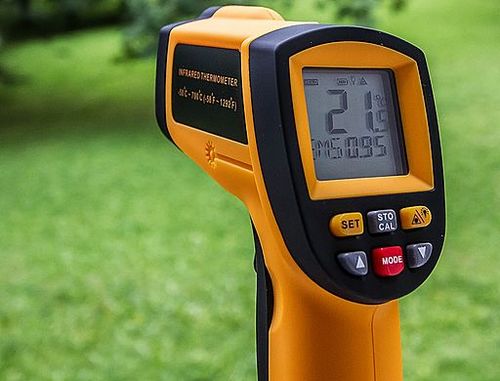Ways to measure temperature have been around for centuries, but with today’s technology, thermometers are becoming more sophisticated and easier to use than ever. Today, you can get very accurate readings with several types of devices, but digital and infrared thermometers are the two best choices.
Although today’s thermometer technology is more advanced, the basic principle of any thermometer remains the same: the device uses some sort of sensor to measure temperature differences in substances and the thermometer itself. In the past, it was a liquid like mercurybut newer devices use tiny digital technology to take measurements.
This is why digital thermometers and infrared thermometers are the best available today.
Digital Thermometer

The best thing about digital thermometers is that they display the temperature on an easy-to-read display rather than with a line moving through short increments like old-school thermometers.
While they still use probes, like the ones your mom probably used to take your temperature or the kind you used to roast roasts, digital thermometers use tiny resistors in their internal circuits to measure temperature. This not only gives you a more accurate reading, but gets it to you in seconds rather than the minutes or so that a classic thermometer requires.
Digital thermometers are still great for taking someone’s temperature or for see if the food is cooked properly. It also still has uses in science, when a fluid needs to be monitored.
Infrared Thermometer
With infrared thermometers, most of the principles of digital are the same: they give you a digital readout and use a small resistor in their circuit to measure the temperature. The advantage of an infrared thermometer is speed and accuracy.
All objects emit infrared light, but the hotter an object, the more infrared it emits. This is the basic principle that this thermometer works. They can instantly read the temperature of any object with great accuracy. The big advantage of infrared thermometers is that they also use infrared light to measure the difference. This means that there is no contact with the object being measured and the thermometer itself, unlike a probe type thermometer. You can find digital and infrared thermometers at this site.
Which is the best?
As with any tool, you need to use the right one for the job. Each has advantages and disadvantages.
Digital thermometers are great for finding the internal temperature of things: people, food, liquids, even the ambient air around you. Infrared thermometers, on the other hand, can only measure surface temperature: light doesn’t penetrate more than a few centimeters below the surface, making it useless for heating food and measuring other core temperatures. So it really depends on what you use it for.
You need to know what you want to measure before deciding to buy a thermometer, so evaluate your needs and you should know what to buy.









